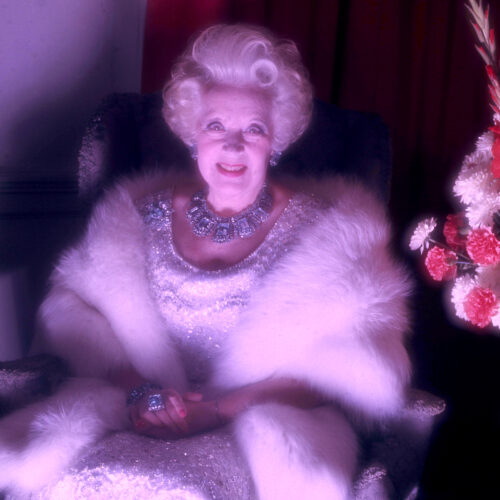Hamish Gobson’s diary: the view from across the Uisge
Wednesday 12 July 2023
I TURNED ON Wimbledon last Thursday afternoon for the first time this year and it occurred to me that, if I were in the Scottish Parliament, I could describe the scene in much the same way that Hamba Yousaf did when he wound up the debate in Holyrood about racism a few years back.
There were two players on court and both of them were – how can I put this politely? – white. The line judge who shouted “EEOOUUTTTT” so loudly that he could have been heard in Bute House was white too. The ball girl crouching at the net in the baby-box position – white. The elderly lady sitting next to someone who looked like Peter Murrell’s Teddy – white. The lines drawn all over the grass – white. The Navy lady standing tall on legs of oak – white. Most of the celebs in the Royal Box – white. The hundred or so spectators wearing Geoffrey Boycott’s hat – white. The noise coming from the commentary box in the absence of John McEnroe – white.
I could go on, though I would not be reporting fairly if I did not add: the chap on the high chair by the net calling the shots in a beautifully modulated accent – black. But this gentleman was, like Umpire Yousaf in his own rather less athletic “centre court”, in a severe minority. Should I report the All England Lawn Tennis and Croquet Club to the United Nations Commission on Racial Balance at Tennis Matches – or would the Scottish Extra-Territorial Racism Elsewhere Tribunal be more appropriate?

There was another Black in the news last week – I refer to the MP for Paisley South and Renfrew, Mhairi [sic ] Black. She does not look, to me, like a sports enthusiast. She may once have played wild soccer on old, black-and-white bomb sites, but I doubt she was ever morally qualified for tennis. It requires a more egalitarian approach to sporting etiquette, which includes being gracious in defeat. That she certainly is not, as she made clear in her recent statement about leaving the House of Commons.
“I have no desire to have a long career in elected politics,” she wrote in her confessional sob to Father World. The whole document was 430 words long, but she used “I” or “my” 34 times. Every twelfth word referred to herself. Is this a European record? I am not sure, but what I do know, from having recently re-read Barbara Cartland’s sixth autobiography, that she is up there with the Queen of Pink. Both are boastful, assertive individuals. The difference is that the Queen of Pink actually achieved something when she went into public life.
Ms Black, who could be more accurately be described as the Queen of Grey since she generally dresses like a London Transport bus conductor, wrote in her statement last week: “Watching people in my constituency being continually harmed by a UK Government they never voted for… is beyond demoralising… This aspect is painful and would take its toll on anyone that cares, as it has me.”
I will not discuss the childish idea that all constituencies should always vote for the government – that is called a one-party state, and the country rejected the idea decisively in a plebiscite in 2014. Instead, I will concentrate on the way a tougher personality than the Honourable Memberette for Paisley South and Renfrew dealt with injustice in a free political system like our own.

The Queen of Pink’s autobiography that I referred to is called I Reach for the Stars (1994). Among many other fascinating things, it tells the story of the author’s involvement with politics. In 1955, she became a member of the Hertfordshire County Council, on which she represented the Conservatives for nine years. That is about the same length of time the Queen of Bus Conductors sat in the House of Commons. But the achievements of the two ladies was hardly comparable in terms of practical outcome for humanity.
Ms Cartland reports three of her campaigns. The first aimed to help old people who were being treated then in much the same way as the SNP treated care home residents during the Covid years, only without the Scottish government’s lying, brutality and incidental homicide. Another battle the Pink Queen fought was to get prayers said in state schools. There she was successful too.
Her third campaign was the most interesting. “I learned that since the time of Henry VIII when gypsies first came to this country,” she writes, “the children had never been able to go to school, because the police moved their caravans every twenty-four hours.” (p. 28)
She saw gypsies on a common near Hatfield and talked to them. “They said they had been born there and had always returned wherever else they had been. They were sitting on the grass listening to the schools broadcast. They showed me a summons that had just been given for having a dustbin, two milk churns and a pram containing a live baby.”
The Queen of Pink rang up “the Chief Constable of Police” and asked where the gypsies could go. “Nowhere,” he said.
“But that’s absurd,” Ms Cartland replied. “They have been told they have to move every twenty-four hours, and if they can go nowhere it means a perpetual life of wandering. Besides, they are flesh and blood, they can’t just disintegrate.” (p. 29)
That was the law, she was told, and anyway wherever the gypsies camped someone nearby would phone the police to ask they be moved on. “It is absolutely ridiculous,” she told the Chief Constable. “If that is the law then it is time it was changed and somehow I will change it.”
Being more energetic and caring than the Queen of Grey, Ms Cartland went to the court where the hearing for the dustbin summons was in progress and asked to speak, presumably as some sort of amica curiae. She succeeded in embarrassing the magistrate who was imposing fines on the gypsies for having a dustbin when, as everyone knew, the whole country was trying to get non-gypsies to pick up their litter and put it in bins – in other words to copy the example of the Hatfield mobile-homers who were being punished for their virtue.
Next she raised the matter at the County Council. “I told the Councillors that there were a large number of true gypsies in the country and that it was essential the children who were Hertfordshire born should be given an education.” (p. 30)
The battle lasted three years, but she kept it up, without once mentioning her “wish to spend more time with my loved ones in a safer environment”, which is one of the reasons the Paisley quitter gives for abandoning her own, £86,000 per year crusade on behalf of her “brilliant” constituents.

Eventually Ms Cartland was “phoned by Sir Keith Joseph” (left) who told her she had won. “Now we have fifteen camps for gypsies in Hertfordshire alone,” she writes, “and I have my own camp where there are the original Romany gypsies I found with the dustbin, and they have been very happy there ever since.”
Has the Queen of Grey ever achieved anything so important – or so generous-spirited? Answers on a postage stamp, please. Nationalism is never about people; it is always about power. The ordinary voter gets no consideration from the political degenerates in the nationalist “movement”. They are the “little people” who have to pay taxes and be exposed to the risk of death in care homes. Was it Angus Robertson who suggested that dead grannies help yesdebaters?
The Queen of Grey is right about one thing, however: the UK government has failed Scotland. It allowed Tony Blair to conjure up a gerrymandered “parliament” which has given a platform to some of the most bilious, dishonest and ugly-minded ego maniacs in the country. They are not interested in Scotland any more than Bonnie Prince Charlie was. The egocentricity and lazy-minded pessimism of Madame Black’s resignation statement is eloquent evidence of that.
The Queen of Pink, by contrast, always preferred to accentuate the positive.
“I am convinced,” she writes, “that the most important thing to do is the keep the mind working properly. Like many other activities of the body, the more you do the more you are capable of doing and the easier it becomes. That is why at ninety-three I have broken the World Record for twenty years running in writing twenty-three books a year—a book every fortnight.” (p. 150)
We await the Queen of Grey’s first autobiography with interest. But I do not expect a romantic novel to follow, much less the 600 or so which the Queen of Pink Industry published. That would involve writing about something other than herself.
–––
Hamish Gobson lives on the Hebridean isle of Great Todday (Todaidh Mór) and features in Nicola Sturgeon: the Years of Ascent (1970-2007) – A Citizen’s Biography of a Driven Woman in a Drifting Parliament (Ian Mitchell, 2022) – available on Amazon and also reviewed here by Tom Gallagher.
Also written by Ian Mitchell is The Justice Factory (second edition): Can the Rule of Law Survive in Twenty-First Century Scotland? which considers the future of liberal democracy, taking Scotland as an example.
If you appreciated this article please share and follow us on Twitter here – and like and comment on facebook here. Help support ThinkScotland publishing these articles by making a donation here.
Photo of Dame Barbara Cartland by Allan warren – Own work, CC BY-SA 3.0, https://commons.wikimedia.org/w/index.php?curid=12747690








